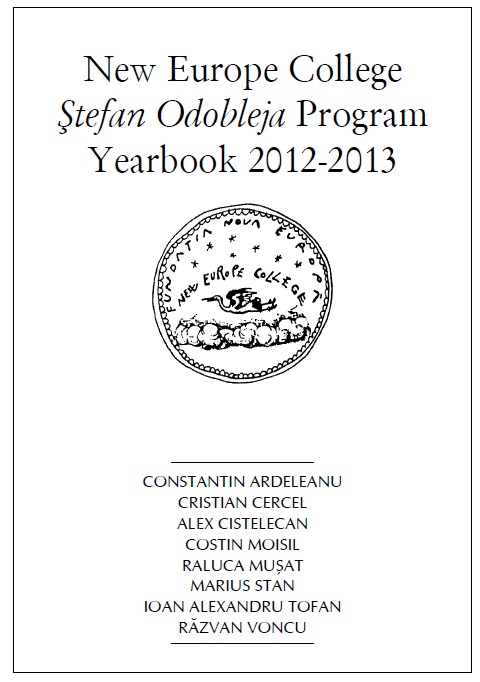

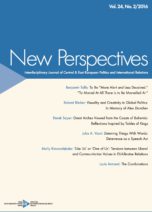
Keywords: deterrence;nuclear weapons;speech act theory;securitization;
As Cold War historians and fans of the film Doctor Strangelove know, deterrence can be atricky business. The complexity of deterrence and the lack of attention that has been paidto its social effects have too often left one of its forms – nuclear deterrence – depoliticized,uncontested, and thus a danger to us all. I argue in this article that speech act theory can provide insights into deterrence and its concomitant political effects. It can be used to philosophically explain the communicative difficulties involved in deterrent relationships, and to form a basis for a critical stance on deterrence as politics. This entails a shift of focus from deterrence as a state of mind to the politics of deterrence and the deontic powers it wields – a shift from the causative aspects of deterrence to the deontology of deterrents. The analysis of such political functions is aided by the neologism of deterrentification,which refers to assertive and declarative acts that alter the status functions of things so that they are thought to act as deterrents and bring about determent in someone or something.It also aids in conceptualizing how the status of deterrents can be cancelled, and how nuclear weapons can be drawn away from the exceptional sphere of deterrence and back intothe sphere of politics. Such a status transformation is required to achieve a sustained nuclear disarmament.
More...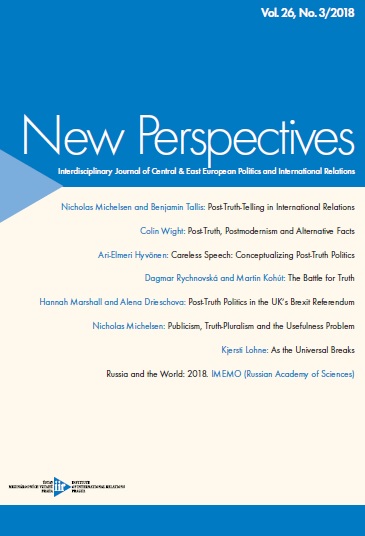
Keywords: usefulness;1919;pluralism;publicism;international relations;IR century;IR centenary;post-truth;
Revisionist studies have shown that stories about International Relations’ (IR) supposed disciplinary birth in 1919 function to obfuscate the history of international thought. 1919 has nonetheless cast a long shadow over how the usefulness of professional scholarship in International Relations has been conceptualised. In this article, I trace how the 1919 birth-story orientated disciplinary constructions of the usefulness of the field as they relate to pluralist approaches to truth-seeking in IR. I argue that the centenary of 1919 reminds us of the publicist as well as pluralist scholarship of the inter-war years. Our discipline’s supposed centenary should therefore foster a drive towards better communication with global IR’s publics and, in this way, ensure that we are better equipped to deal with the so-called post-truth era.
More...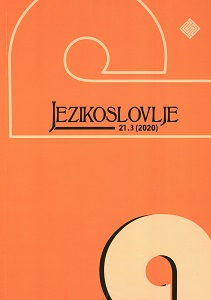
Keywords: metaphor; metonymy; framing; medical discourse;
This article studies figurative uses of metaphors and metonymies utilized to frame the discourse of transplantology. We assume a somewhat wider view of framing than is usually found in the literature and argue that framing effects can be observed on a cline stretching from the private to the institutional pole. We combine this approach with the findings of the prospect theory that distinguishes between gain-framing and loss-framing as two strategic choices in tackling an issue in discourse. The framing tools, as we show in our analysis of authentic materials, in order to be effective need to be adapted to the section of, or the point on, the cline occupied by a particular subtype of discourse. Although the focus in the cognitive linguistic literature is on how conceptual metaphors are employed in framing discourse, we point out that metonymies, interacting with these metaphors, can also play a very important role. The framing tools used in public campaign aimed at winning new organ donors are strategically mostly gain-framed, and as a rule globally based on the GIFT metaphor. It seems that the metaphorical use of GIFT as a global choice in institutional contexts is not very efficient since it is too general and vague to make discourse more persuasive at the personal level, as expected in the light of the exemplification theory. This metaphor is more effective when adapted accordingly, as we demonstrated on some campaigns supported by or based on metonymic presentation of various aspects stressing the quality of life after transplantation
More...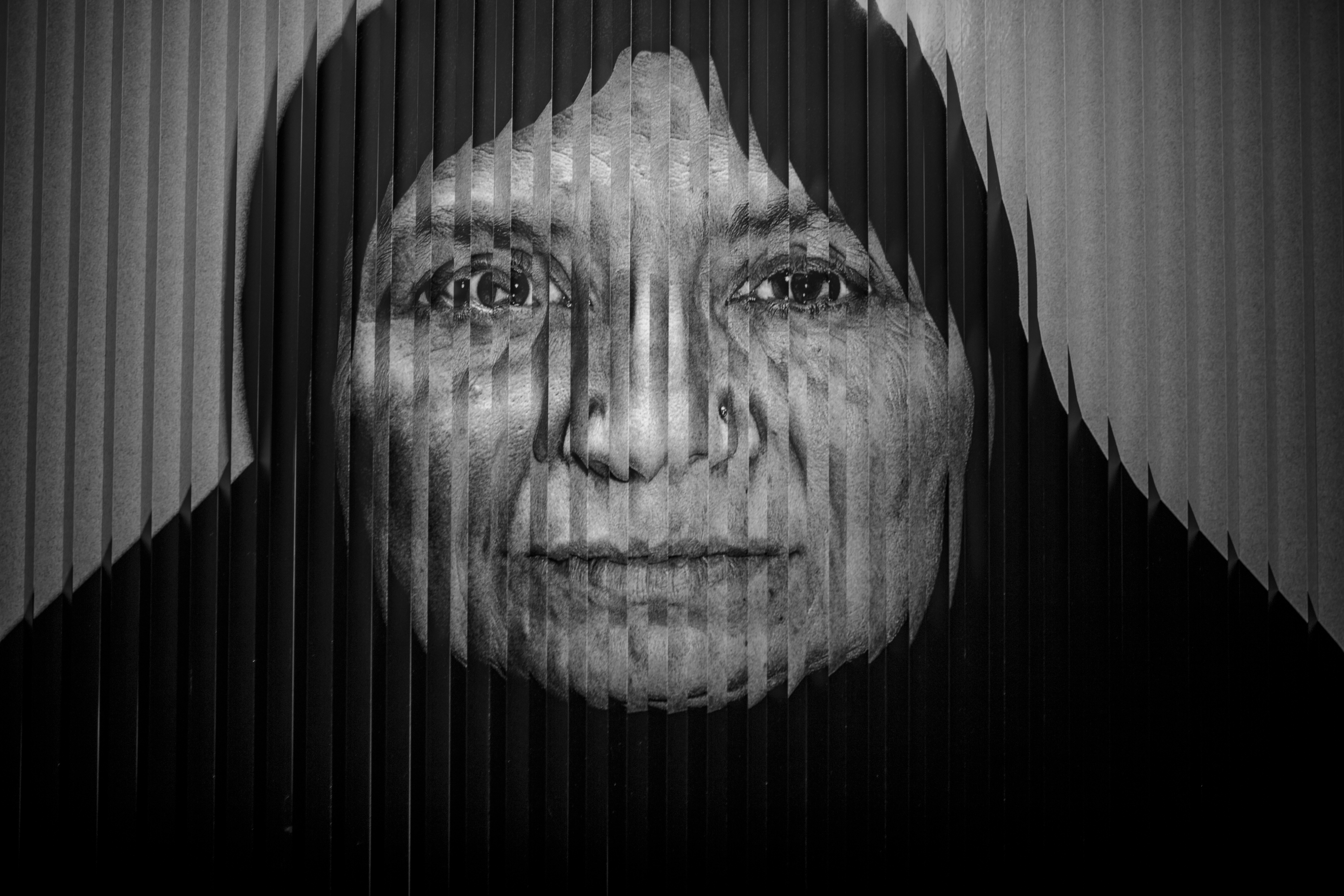
Keywords: painting; image; text; textuality; poststructuralism; American art
Using Craig Owens’ argument about the repression of the discursive in modernist art, the article provides an analytical and theoretical account of the complex and changing relationship between the visual and the textual in American painting since c. 1950. The article focuses on the status of verbal inscriptions on a canvas, their function, meaning and relation to the medium of painting. In the introductory section of the text special attention to the poststructuralist, expanded understanding of such notions as “text” and “writing” and its consequences in visual arts as well as the unresolvable dialectic of looking and reading and its theoretical implications addressed in more recent art theory. The analytical part starts with the discussion of the paradox of Pollock’s drip paintings as both the epitome of modernist autonomy and a figure of “arche-writing” (a potential script); than it focuses on more specific cases of textuality in C. Twombly’s, J. Johns’ and E. Ruscha’s works, and finally deconstructive modalities of “writing in painting” in works by Ch. Wool, G. Ligon, K. Aptekar and M. Tansey become the object of interpretation. In conclusion it is argued that latter artist’s work – Reader – epitomizes the differential superposition not only of painting and writing but also of the modern and the postmodern, the past and the present experience of “reading” images. As a result, the long perspective on the process of the emergence of the textual in painting described in the article does not so much operate with the logic of binary oppositions between modernism and postmodernism or exclusion of text and its subsequent inclusion, as allows us to look at it in terms of layers of signs, always already there, coming to visibility at different historical moments.
More...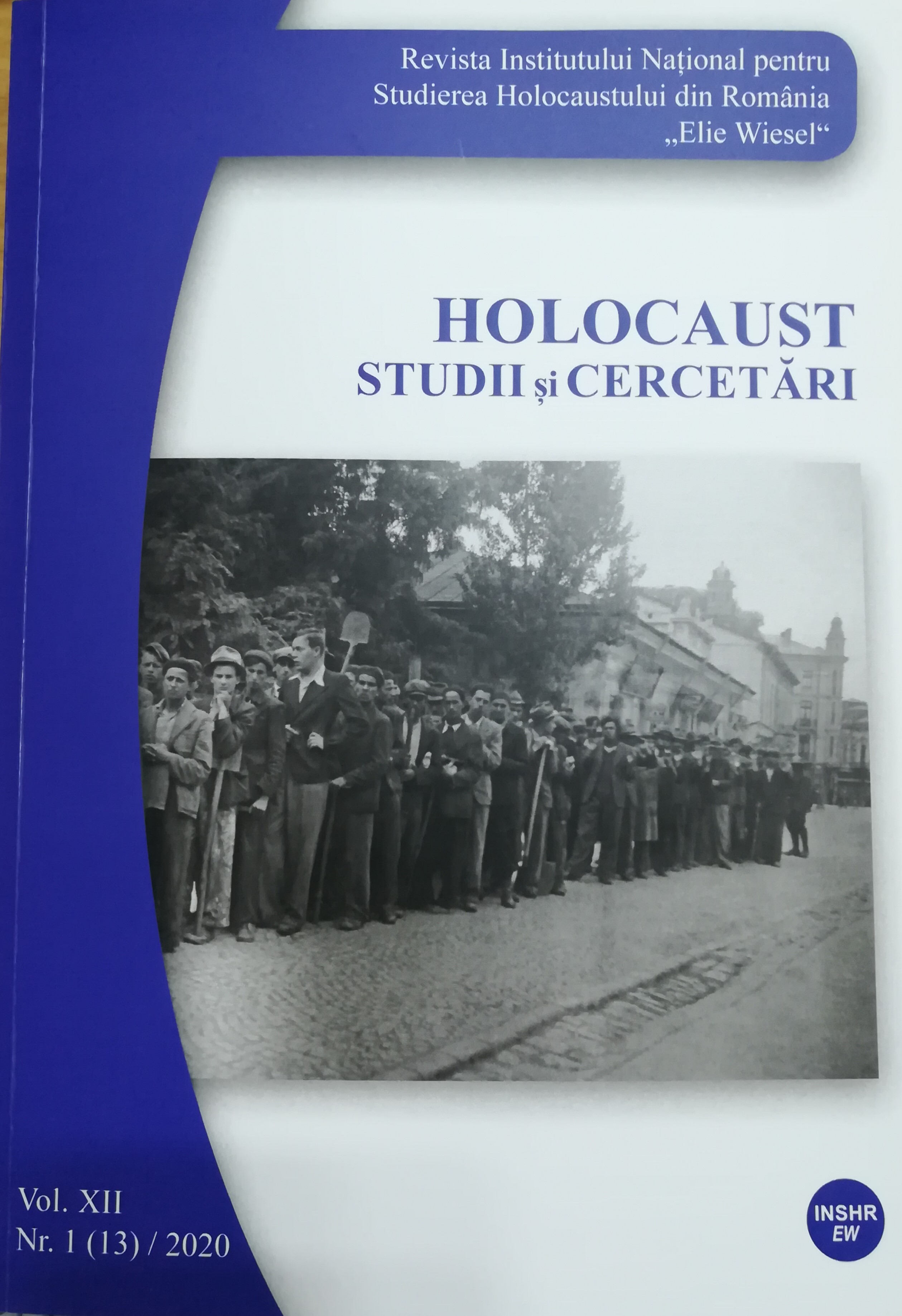
Keywords: Nicolae Iorga; identity; nationalism; anti-Semitism;
This paper turns toward the image ascribed to the Jewish minority by one of the most prolific representatives of Romanian culture, Nicolae Iorga. The analysis starts with the identity pattern proposed by Iorga and moves to the cluster of attributes that he ascribed to the Jewish minority, as well as the social roles associated to the latter. On a final approach, our interest moves towards the political solutions envisaged by Iorga to solve the “Jewish problem”.
More...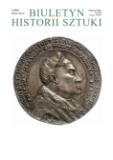
Keywords: exhibition history; German graphic art; Central Bureau of Art Exhibitions; the Thaw, German-Polish cultural exchange;
The aim of the essay is to delineate the political and artistic contexts of two exhibitions of graphic art from the Federal Republic of Germany held in the Central Bureau of Art Exhibitions, the main state art gallery in Warsaw (1956-1957). The historians consider the year 1956 - similarly to the years 1968 or 1989 - to be an important caesura in the political and social history on the global scale. In the history of modern art in Poland, the year 1956 is also perceived as a period crucial to changes in artistic life (Polish thaw). As the first show of West German artists in post-war Poland, the Exhibition of the Works of Graphic Artists from the Federal Republic of Germany opened in Warsaw on the same day when Nikita Khrushchev delivered his celebrated “Secret Speech” in Moscow (25 February 1956). The exhibition Poster Art in the Federal Republic of Germany was organized in 1957, after the events of the Polish October (1956). The idea to juxtapose art exhibitions with political events of their era follows contemporary reflections on the phenomenon of non-contemporaneity and on the heterogeneous nature of the visual time of art and exhibition histories.
More...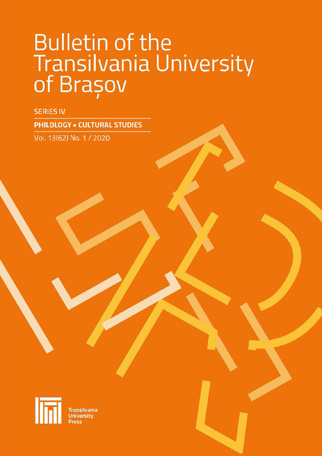
Keywords: language; agency; inmates; juvenile prison; pedagogy;
Learning about freedom as freedom to make right choices responsibly is the pivotal task of educational intervention (Chionna 2001). As a practitioner of juvenile penitentiary re-education I experiment it, trying to re-educate young offenders in a prison, where the “capability approach” should be invoked (Sen 2011) and, according to the relational ethics paradigm (Muschitiello, 2012), we teach the young the capacity/ability of choice between alternative life experiences, which should be inspired and embodied by the educational authority of the adults.As agency is a constitutive element of a capability, I wonder: who is the agent? The one who re-educates an inmate? Or the inmate himself? Who should be more efficient and responsible to act in prison? Is it all about specific required competencies that are influenced by the context where penitentiary personnel and inmates act/react reciprocally?Penitentiary educators should adjust their approach, improving their language-as-dialogue tools first, just because the relationship with inmates is based on a dialogic axis. No exception can be made for cultural and linguistic mediators, who are involved in the treatment of foreign inmates (Brancucci 2018). So, I investigate the agency level of penitentiary educators and cultural/linguistic mediators, working together synergistically and/or autonomously.They try to respond to different scenarios, recognizing there is no one-size -fits-all approach to managing cases of re-educational emergencies, and assuming that educational interventions recall a daily presence in the context (Bertolini 1993), especially in prison where people ‘live’ in close proximity (WHO, 2020).But, how to achieve agency when this proximity fades away, or is temporarily interrupted, even turning into a virtual telematic educational approach? The challenge is to transform the consolidated educational-linguistic-dialogic practices into a new bidirectional way to think, act/react (from prison personnel towards inmates and vice-versa), because of the social distance required by the COVID-19 breakthrough.
More...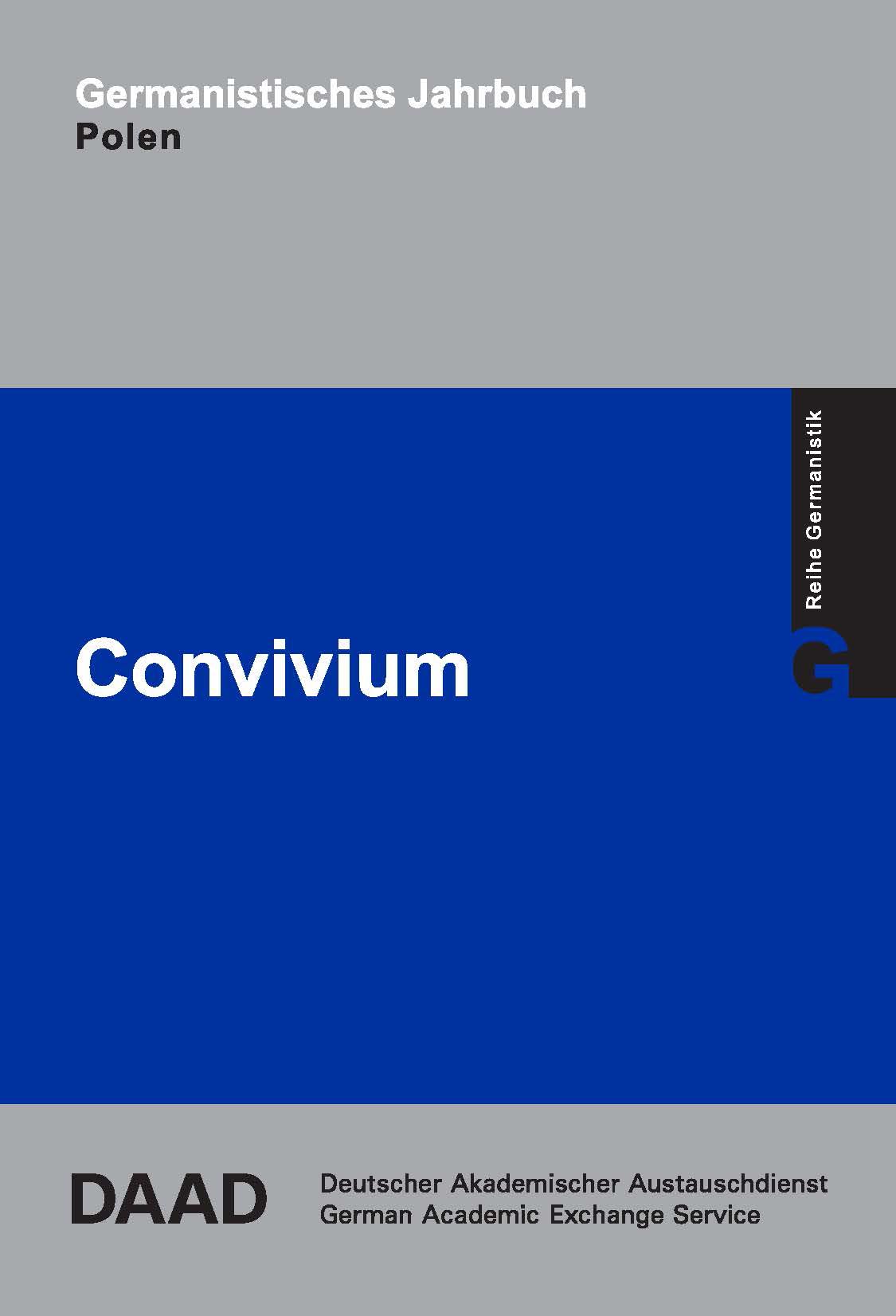
Keywords: language games; phrase;metaphors;press;
The article presents an overview of different types of allusive statements, using original examples from German press articles in the field of politics and economics. In the first part, a linguistic analysis of the form of allusive statements, which is often based on word-play, modifications of idioms, metaphors, etc., has been carried out. In the second part, the article demonstrates and explains the functions which can be ascribed to the allusive statements, with references to context, situation and intention of the language user.
More...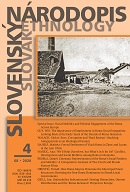
Keywords: mobility; immobility; Roma; poverty; capitals; development projects;
This paper explores social mobilities and trajectories in relation to particular mechanisms of subcontracting and of unequal distribution of capitals in the emerging field of EU funded projects for poor and socially excluded populations in Europe. It discusses some of the struggles for possible mobilities and its limits amidst continuing production and reproduction of privileges, disadvantages and structural orders in these project-cum-policy worlds constraints. By examining a particular case of a large-scale and multi-sited project and other similar project schemes, described by some of its proponents as one of the most ‘participatory’ projects for Roma in Europe, the article illustrates particular mechanisms of power and knowledge reproduction that facilitates some kinds of mobilities while also reproducing certain constraints and limits on these possibilities (for some subjects and some social trajectories). It develops an ethnographic critique of situated and nesting hierarchies of management and brokerage leading to reproduction of particular setups, privileges, unequal economic distribution and (mis)recognitions of capitals, which allows for particular emergence of particular kinds of contested ‘expertise’ in the uneven field of so-called ‘Roma inclusion’.
More...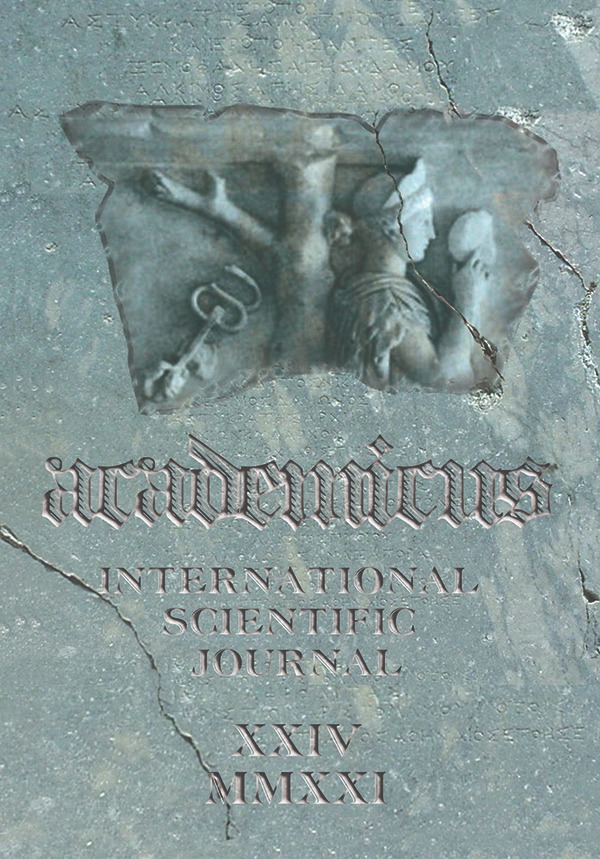
Keywords: second-language learners; collectivistic societies; self-efficacy;
In reference to cultural patterns in collectivistic societies, teaching and learning are greatly influenced by the teachers’ collectivistic or individualistic cultural orientation (Kaur & Noman, 2015). However, in dealing with both audiences and their teaching platforms, a chasm appears between methodologies and their applications since collectivistic societies are reluctant to accept methodologies perceived as mere Western innovations. In other words, a seemingly pedagogical incongruence arises where direct individualistic Western influence is perceived as unsuitable to a collectivistic mindset. One must keep in mind that family members in collectivist societies, who view themselves as part of a group rather than independent individuals, seem to feel more interdependent and mutually responsible for each other. In addition to Vygotski’s assertion that children’s cognitive development is enriched through social interaction with more skilled individuals (1978), Bandura (1982) emphasizes that the degree to which learners believe in their own self-efficacy influences their functioning cognitively, motivationally, emotionally, and their decision making process. Also, self-efficacy is perceived to accelerate the process of adapting to a new environment while learners adopt new cultural practices and consent to norms and expectations. In our exploration, second-language learners (SLLs) from collectivistic societies advance academically—English as a second language included—within the frame of sociocultural theory, since they seem to be motivated by their culturally-induced sense of obligation to honor their parents and other group members. These SLLs are positively influenced by their prior experiences with the group’s perceptions and expectations of their capability to learn an additional language (Bandura & Schunk, 1981; Schunk, 1991). Our research seems to indicate that this outcome is significantly affected by the self-efficacy and self-reliance produced by prior successes in challenging tasks that may have been mandated by the SLL’s elders. In addition, SLLs also seem to succeed in accomplishing more challenging goals as they observe their families’ values and traditions even when they are in a society that enforces individualistic values.
More...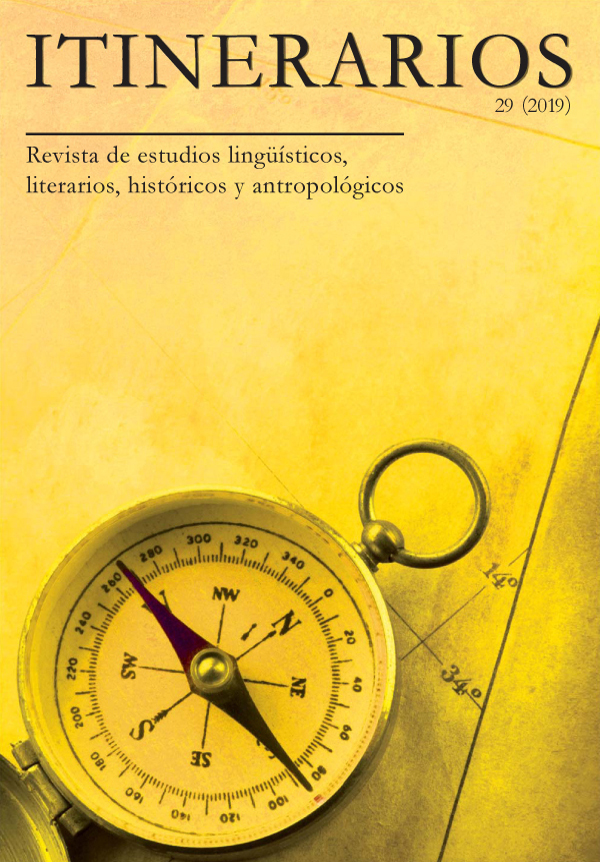
Keywords: verbs of movement; SLA; TLA; lexical choices; Spanish L3
The aim of this article is to analyze an issue that seems to be problematic for Polish students Spanish as a foreign language at all levels: the use of the verbs venir and llegar. These verbs tend to present difficulties both in their more prototypical meanings and in the use of locutions belonging both to Spanish and Polish (e.g. zajdzie daleko/llegará lejos). Two groups of students from the University of Warsaw (B1 and B2) were asked to translate 23 sentences which in Spanish would normally opt for either venir or llegar and, in this way, the following points were analyzed: a) What verbs do Polish students prefer when translating these sentences?, b) How do Polish students translate the prefixes do- and przy- when it comes to verbs of movement?, and c) How do the students translate non-prototypical meanings of the Polish equivalents of the Spanish verbs venir and llegar? The results suggest some improvement in the use of the verb llegar in the B2 group, but a backslide in the use of the verb venir by the same group, which points to the need for greater semantic awareness in terms of the Spanish verbs of movement even in advanced groups.
More...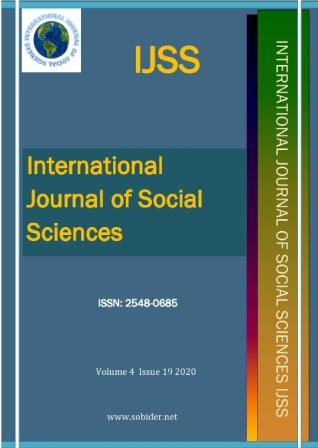
Keywords: Multiculturalism; motivation; foreign language learning; intrinsic motivation; extrinsic motivation;
Motivation is the key element of all kinds of educational activities including foreign language learning. Since there are numerous distractions that can affect learners’ motivation in a negative way, the tools to establish and maintain motivation need to be robust. Multiculturalism is the coexistence of a variety of cultures in the same setting. People in general are naturally interested in the topics related to their cultures due to their sense of ownership of the relevant culture. This article discusses a positive correlation between multiculturalism and motivation because cultural items and tools are authentic, colorful, and appealing. Consequently, using cultural differences or similarities are suggested as a way of strengthening learners’ motivation.
More...Keywords: literacy; orality; youth; youth language; Polish middle school examination
Acquiring literacy by a young person changes his/her perception of reality and broadens the possibilities of participation in social life. The following problem was addressed in the article: to what extent did middle school students achieve advanced literacy, consisting in the ability to interact with texts, and, in particular, to create written texts? The answer to this question was based on the analysis of middle school final examination documentation from years 2002-2018. These are obligatory examinations, which in those years took place at the end of the last uniform and compulsory stage of education. They were an opportunity to reveal the level of literacy of young people. Analysis of the documentation showed that middle school students have great difficulties in the area important for acquiring literacy, which is the ability to construct longer written utterances, which may hinder the full participation in a culture based on writing. The above results and the educational practice of “studying for a test” prompt to thoroughly rethink the construction of the eighth-grade examination (which will soon replace middle school examinations) in this regard.
More...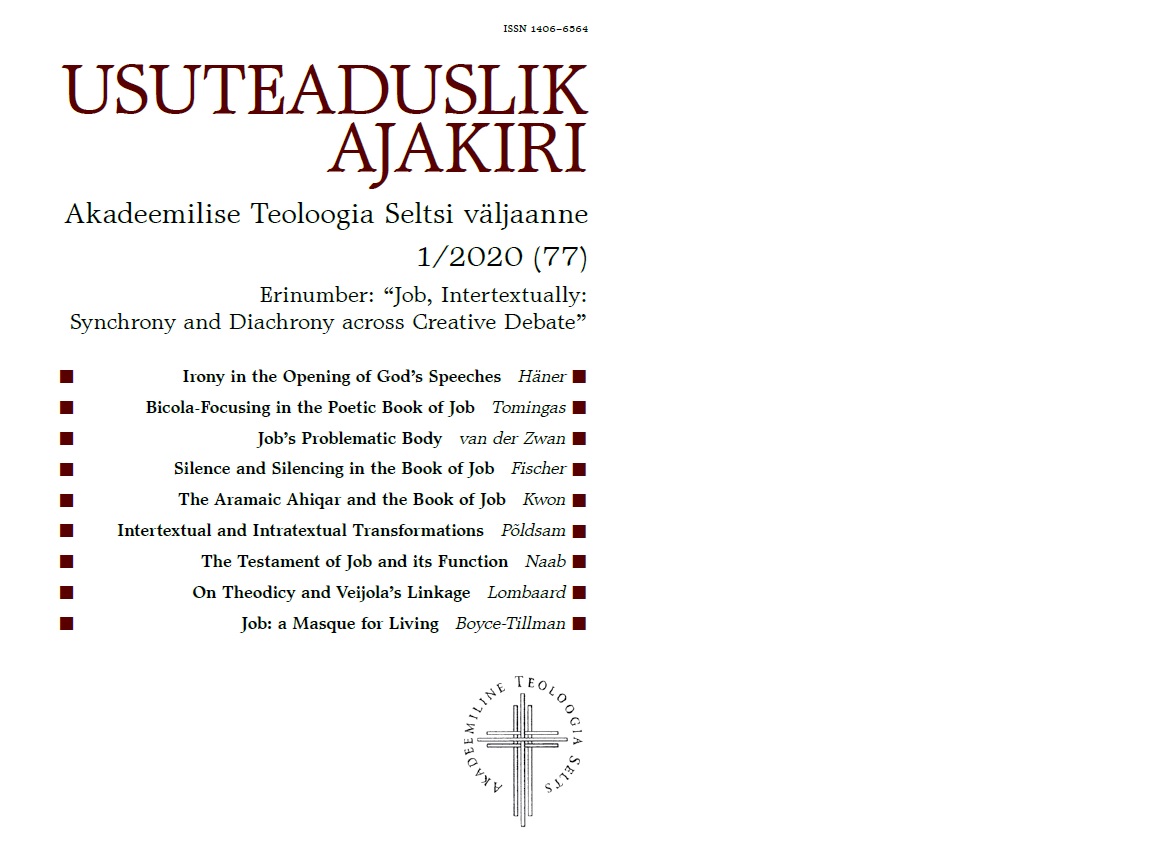
Keywords: creativity; re-membering; palimpsest; intertextuality; theodicy;
This article draws on an artistic presentation using audio,visual and live artistic elements to explore theodicy through the twenty-two plates for the Book of Job of William Blake dating from 1821 or1822, Vaughan Williams’s Job—A Masque for dancing and a song by JuneBoyce-Tillman drawing in the Wisdom theology of William Brown. It will use the image of the palimpsest as a metaphor for an artist’s creative process. This starts with de Quincey’s (1998) work on art as resurrection, Plato’s and Freud’s (1925) work on memory as a wax tablet, Kristeva’s intertextuality with the distinction between the geno-text and pheno-text (Johnson 1988) and Buber’s (1970) and Williams’s (2018) on art as encounter, which are combined with Koestler’s (1964) work on the incubation phase in the creative process (Wallas 1926). It will examine the different possibilities and limitations of various art forms. Blake, influenced by Swedenborg and Boehme, used the story to construct a symbolic universe in line with his thinking about the important role of the imagination in the spiritual search, limited for him by the new natural sciences and traditional religion. These illustrations were taken up by the composer Vaughan Williams as the basis of Job—A Masque for dancing—from 1931, of which pieces were played in the presentation, such as Satan’sDance of Triumph and the Pavane of the Heavenly Host. The work of William Brown in Wisdom’s Wonder (2014) was also included in the thinking behind June Boyce-Tillman’s Forgiveness Song (2018), which is set out to show how the artistic sources were reworked in a new way that allows the former artworks to shine through. The article intertwines theodicy in Jobwith explorations of the complex nature of the creative process.
More...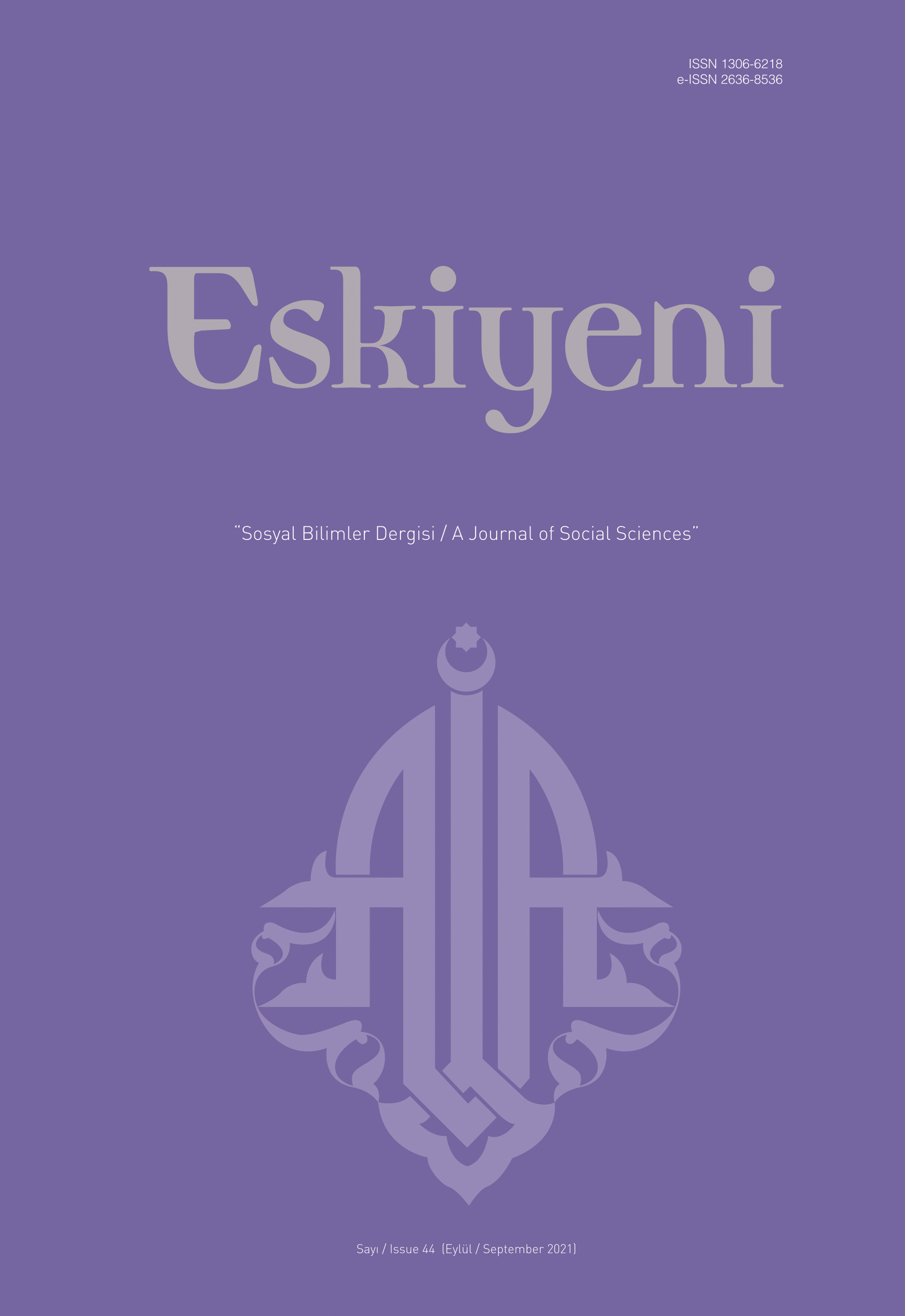
Keywords: Turkish Islamic Literature; Mawlānā; Mathnawī; Fayḍullah Sājid; Poetic Translation;
Mathnawī, one of the basic works of Islamic civilization, has received great attention since the day it was written. In addition to Eastern languages such as Arabic, Hindi, Sanskrit and Urdu, it has also been transleted to Western languages such as German, Dutch, French, English, Spanish and Italian. Feyḍullah Sājid (1892-1978) was one of the translators of the Mathnawī, many translations and commentaries of which were made into Turkish literature. Sājid translated the first book of Mathnawī in 4,118 couplets in syllabic meter and published the first thirty-four of them in Ottoman Turkish in 1928; he later published all of them in new alphabet. Thirty-four couplets, which are the subject of the present study, are successful in terms of meter, rhyme and antibacchius. They have a very simple and understandable style. In terms of rhetoric, they contain strong couplets, as well as couplets that do not exceed the average. Adopting the literary translation method, the interpreter translated the words of the source text by finding appropriate corresponding words in Turkish or using the words in common use. He also benefited from the original words of the source text to a degree that did not harm the simplicity of the translation. While he conveyed the literal meaning in some verses, he used concepts or idioms that had no equivalent in the source text. This approach was not always accurate; it sometimes added richness to the translation, while causing the meaning of the source text to be misunderstood or not to be understood. The translation is in accordance with the content of Mathnawī, except for abovementioned issues. In the part where the rise of the existence is dealt with (1-18), it is stated that ‘just as the ney is taken from the reed, man is separated from the bazm-i alast (the world of spirits), moaning constantly to reach to his homeland’. ‘The person who is addicted to this sorrow looks for a heart that has been shredded with longing to be able to express its concerns. Nevertheless, although everybody assume that they are companions of Mawlānā, nobody seeks the secret he has. His secret is not far from his cries, but not all ears and eyes have the illumination to understand him.’ Mentioning that ‘the sound of ney is fire, not wind’, Sājid lists the ‘qualities of ney’, and then expresses that ‘the days are untimely faded in sorrow and all except for the fish are deceived by the water.’ The translator, who thinks it is pointless to extend the word, concludes this part as follows: Does the novice understand the condition of the experienced/In fact, word needs to be brief now. The translator starts to the section dealing with the need to leave the world by saying that “oh my son, emancipate yourself through breaking the chains”. He then proceeds saying that “The sea that falls into a container will be exhausted in a day, and the ambitious will not be satisfied.” According to him, ‘the remedy for this trouble is love because the one whose garment is torn by love suffers no more from shame or ambition. With it, the flesh made of dirt rose to the sky, and the mountain began to dancing and watching.’ ‘The lover that doesn't burn with love is like a wingless bird’. According to Sājid, who stated that ‘without the beauty of the beloved, the beginning and the end cannot be comprehended, the secrets of love cannot be kept hidden just as the reflections in the mirror cannot be hidden. If the mirror of the soul cannot reflect, that’s because its face is thoroughly rusted.’
More...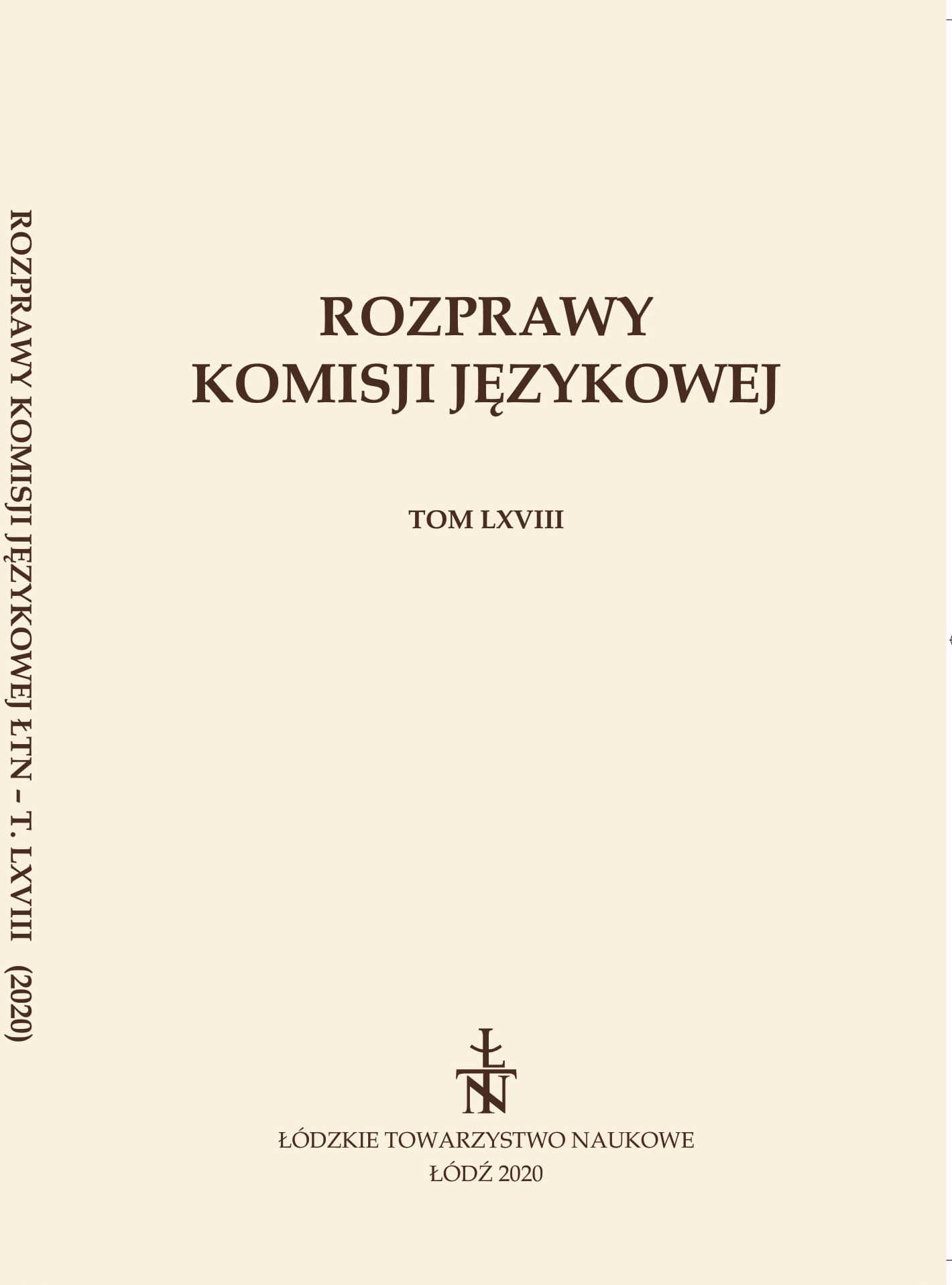
Keywords: historical and contemporary dictionaries; monuments of Ukrainian writing; semantics; church Slavonic words
The article presents research results of the ecclesiastical slavicisms with the root -muk-/-much-. The research is based on monuments of Ukrainian literature written during the 16th–17th centuries (card catalogues, court documents, wills, descriptions of castles, universals of the offices of hetmans, docu-ments of church and school fraternities, chronicles, works of religious, polemical and fiction, memos of scientific and educational literature, liturgical literature, epistolary heritage, etc.) included in the source database Dictionary of the Ukrainian language of the XVI – the first half of the XVII century,edited by D. Hrynchyshyn and Chikalo M., and Historical Dictionary of the Ukrainian language, ed -ited by E. Tymchenko. It was found that the dictionaries mentioned above list more than thirty words of different structure and phonetic-graphic variants of word forms with the root -muk-/-much-.The study focused on the etymological analysis of the studied tokens, which was aimed to es-tablish their semantic etymon, while it was noted that some Church Slavonicisms are traces to the Greek language.The analysis also showed that the abstract Church Slavonic words with the root -muk-/-much-, at -tested in Ukrainian monuments of the 16th–17th centuries, did not undergo significant semantic chang-es in the history of Ukrainian vocabulary. On the other hand, some words have undergone a partial semantic modification, particularly those that have become a part of the idioms in the Ukrainian language of the 16th and 17th centuries, while others have become figurative. It is established that the historical part of the analyzed lexemes is not the same. The vast majori-ty of the studied Church Slavonicisms have survived to this day in the Ukrainian literary language, as well as in the colloquial language. Some of them function in Ukrainian liturgical practice.
More...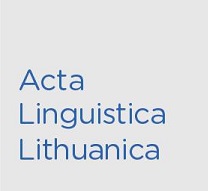
Keywords: medical term; fiction style; fictional text; context; contextual partners; function; determinologization;
The article addresses medical terms in a selected fictional text (Noah Gordon’s novel The Physician, 2020), their features and functions. The text abounds in medical terms. They are usually used to describe various medical treatment related situations. The article focuses on two most prominent groups of terms: proper (scientific) medical terms and improper medical terms or pseudo-terms. It also describes the functions played by medical terms, the meaning of their contextual partners (adjectives, participles, verbs) in performing the stylistic function and addresses the topic of determinologization. When discussing the functioning of medical terms in the fictional text, the article also presents the insights of other scholars concerning the peculiarities of the use of terms in a given text and the proposed classifications of terms in the text.
More...Keywords: Old European hydronymy; Celtic hydronyms; Lithuanian hydronyms; ‘false friends’;
The river-names Lith. Liẽkė, Liekà (and their siblings) are sometimes mentioned in papers dealing with the so-called ‘Old-European hydronymy’. Traditionally they are etymologized on the basis of a root PIE *(h1)lei̯k- ‘bend’. This root, however, probably never existed, at least there seem to be no descendents from it in the appellatival lexicon of any IE language. Thus the root – if it ever existed – cannot be ascribed a meaning. So it seems more appropriate to derive the Lithuanian river-names from the root PIE *u̯lei̯ku̯- ‘moisten, be liquid’. Parallelly the river-name Lech (a river in Austria and Bavaria) was also analyzed based on the two roots mentioned, PIE *(h1)lei̯k- ‘bend’ and PIE *u̯lei̯ku̯- ‘moisten, be liquid’. As just mentioned, the first one, however, never existed – and the second one cannot be the starting point because of phonological reasons. The river-name Lech is based on a Celtic formation ‘the one with stone(-plate)s’: PIE *pl̥(h2)k-(m)néh2- > PCelt. *(φ)likkā-. Thus it is clear that the river-names Lith. Liẽkė, Liekà etc. and Germ. Lech do not have a common etymology.
More...
Keywords: Fiuman dialect; attitudes; perceptions; language maintenance; language shift;
The paper presents the results of a study that aims to investigate Fiuman speakers’ attitudes and perceptions in relation to the maintenance of the Fiuman dialect – the regional minority Romance language spoken in the Croatian city of Rijeka and its surroundings – with a particular focus on age, gender and education level, as individual factors that might determine the processes of language maintenance and shift. A questionnaire enquiring into these issues was distributed to Fiuman speakers of different ages, genders and education levels; the participants’ language biographies and self–assessed proficiency in Fiuman were also examined by the questionnaire. The results show that age and, to a lesser extent, gender and education level predict Fiuman speakers’ self–perceived engagement with, attitudes towards and perceptions of Fiuman maintenance. More precisely, it was shown that Fiuman speakers’ self–perceived engagement with Fiuman maintenance and their positive attitudes towards it rise with age and education level. In addition, Fiuman speakers’ positive perceptions of Fiuman maintenance efforts rise with age and are more characteristic of women than of men. The results provide an insight into the present-day status of the Fiuman dialect, as seen through its speakers’ lenses, and indicate both language maintenance and language shift tendencies.
More...